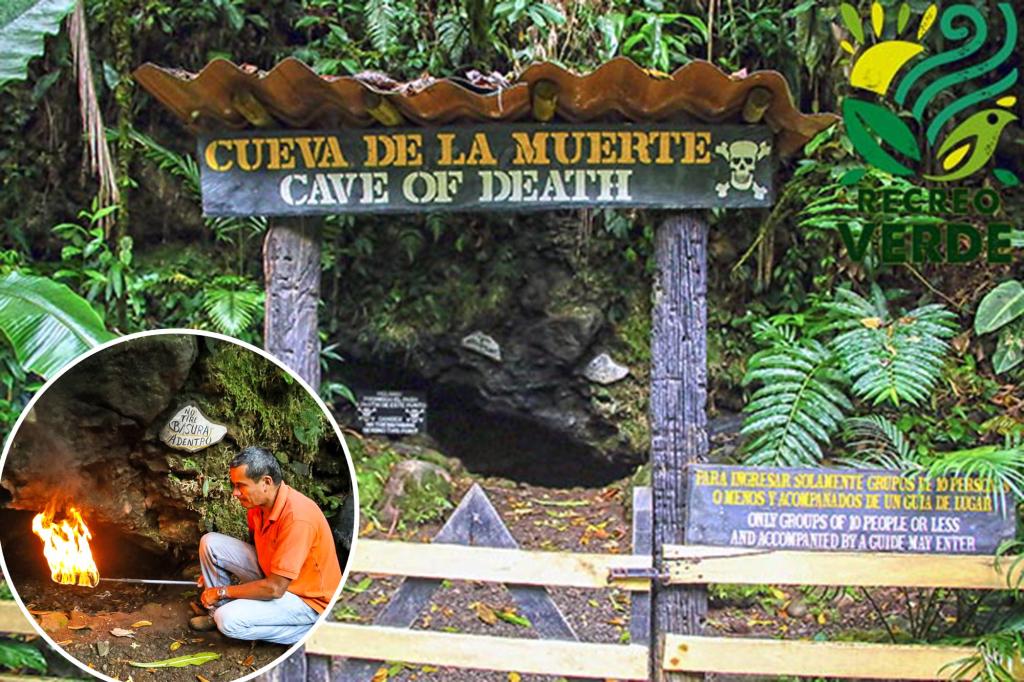The Cueva de la Muerte in the volcanic mountains of Costa Rica is a small cave that is deadly due to toxic air, specifically carbon dioxide. The cave, located in the Alajuela Province, emits approximately 30 kilograms of CO2 per hour, making it a dangerous place for any living creature to enter. The toxic air causes asphyxiation, leading to the death of animals that venture into the cave, unable to breathe properly. Even a bird was photographed dead in the cramped space due to the high levels of carbon dioxide.
The deadly nature of the Cueva de la Muerte is due to the lack of oxygen in the small space, with the toxic carbon dioxide layer rendering the cave uninhabitable for most living organisms. Despite the presence of oxygen near the top of the cave, the lower levels are filled with high levels of CO2, making it impossible for animals or humans to survive for long. The conditions in the cave are so extreme that even a fire torch gets extinguished within seconds of being lit, providing a visual demonstration of the lethal abilities of the cave.
Guides near the Cueva de la Muerte demonstrate the cave’s lethal abilities to visitors, warning them of the dangers of the toxic air inside. Located near the Poas Volcano and on the grounds of the Recreo Verde Hotel and Spa, the cave is marked with warning signs featuring skulls and crossbones to caution people about its deadly nature. Despite its small size, the deadly effects of the toxic air emitted by the cave make it a dangerous place for any living creature to enter, even for a short period.
Researchers in 2022 have warned of the presence of toxic air, such as high levels of carbon dioxide, in caves around the world, highlighting the danger posed by these natural formations. The Cueva de la Muerte serves as a striking example of how a seemingly innocuous small cave can be a ruthless killer due to its unique geological features. The alignment of the San Miguel geological fault is responsible for the dense amounts of carbon dioxide that seep out of the cave, creating a deadly environment for any unsuspecting animals that wander inside.
The lethal abilities of the Cueva de la Muerte are made apparent by the swift asphyxiation of any small animals that enter the cave, succumbing to the toxic air within minutes. The high levels of carbon dioxide in the cave make it a death trap for creatures that cannot escape the deadly environment once they enter. The bird that was photographed dead in the cave serves as a stark reminder of the dangers that lurk within the Cueva de la Muerte, hidden deep in the volcanic mountains of Costa Rica.
Overall, the Cueva de la Muerte is a small but deadly cave in Costa Rica that poses a significant threat to any living creature that enters its confines. The toxic air, specifically high levels of carbon dioxide, makes the cave a lethal environment where even a lit torch is extinguished within seconds. Despite its small size, the cave’s unique geological features and the seepage of carbon dioxide from the San Miguel geological fault make it a perilous place for animals and humans alike. Researchers have identified the presence of toxic air in caves worldwide, emphasizing the importance of caution when exploring these natural formations.















